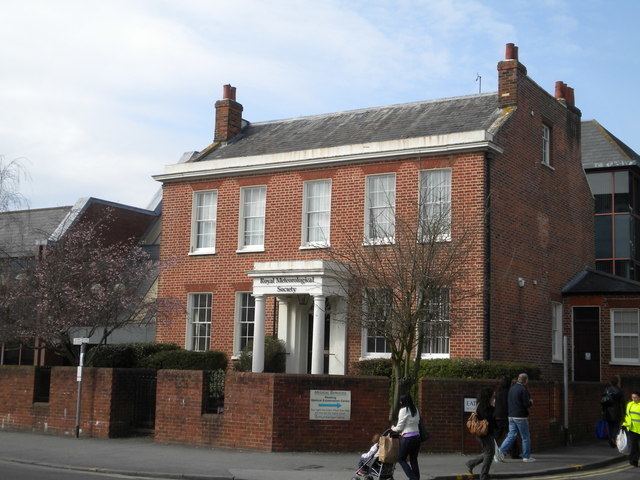 | ||
The Royal Meteorological Society is a long-established institution that promotes academic and public engagement in weather and climate science. Fellows of the Society must possess relevant qualifications, but Associate Fellows can be lay enthusiasts. Its Quarterly Journal is one of the world's leading sources of original research in the atmospheric sciences.
Contents
Constitution
The Royal Meteorological Society traces its origins back to 3 April 1850 when the British Meteorological Society was formed as "a society the objects of which should be the advancement and extension of meteorological science by determining the laws of climate and of meteorological phenomena in general". Along with nine others, including James Glaisher, John Drew, Edward Joseph Lowe, The Revd Joseph Bancroft Reade, and Samuel Charles Whitbread, Dr John Lee, an astronomer, of Hartwell House, near Aylesbury, Buckinghamshire founded in the library of his house the British Meteorological Society, which became the Royal Meteorological Society. It became The Meteorological Society in 1866, when it was incorporated by Royal Charter, and the Royal Meteorological Society in 1883, when Her Majesty Queen Victoria granted the privilege of adding 'Royal' to the title. Along with 74 others, the famous meteorologist Luke Howard joined the original 15 members of the Society at its first ordinary meeting on 7 May 1850. As of 2008 it has more than 3,000 members worldwide. The chief executive of the Society is Professor Liz Bentley.
Membership
There are four different membership categories:
Awards
The society regularly awards a number of medal and prizes, of which the Symons Gold Medal (established in 1901) and the Mason Gold Medal (established in 2006) are pre-eminent. The two medals are awarded alternately.
Other awards include the Buchan Prize, the Hugh Robert Mill Award, the L F Richardson Prize, the Michael Hunt Award, the Fitzroy Prize, the Gordon Manley Weather Prize, the International Journal of Climatology Prize, the Society Outstanding Service Award and the Vaisala Award.[1]
Journals
The society has a number of regular publications:
All publications are available online but a subscription is required for some. However certain "classic" papers are freely available on the Society's website.
Local Centres and Special Interest Groups
The society has several Local Centres across the UK.
There are also a number of Special Interest Groups which organise meetings and other activities to facilitate exchange of information and views within specific areas of meteorology. These are informal groups of professionals interested in specific technical areas of the profession of meteorology. The groups are primarily a way of communicating at a specialist level.
Presidents
Source:
